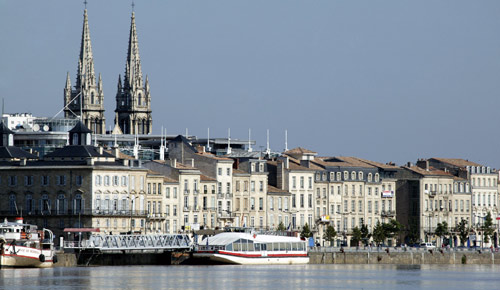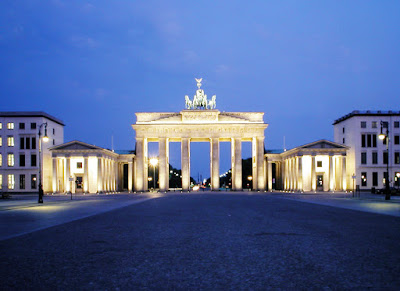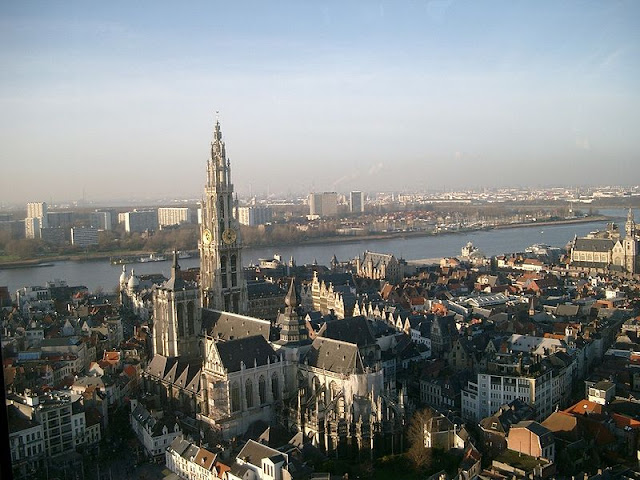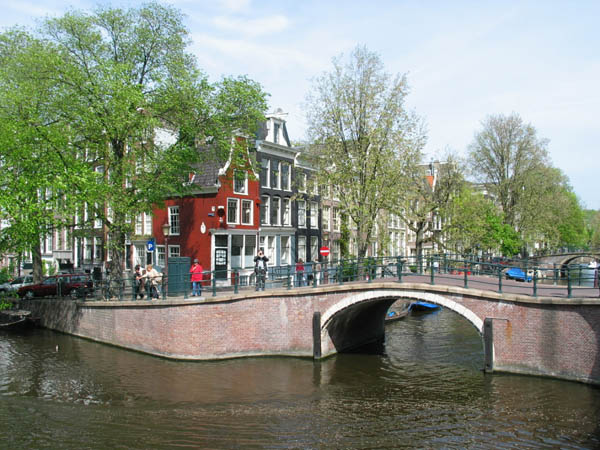Bordeaux is a port city on the Garonne River in the Gironde department in southwestern France. Between 30,000 and 20,000 years ago the area of Bordeaux was inhabited by the Neanderthal, whose remains have been found at a famous cave known as Pair-non-Pair, near Bourg sur Gironde, just north of Bordeaux. In historical times, around 300 BC it was the settlement of a Celtic tribe, the Bituriges Vivisci, who named the town Burdigala, probably of Aquitainian origin. The name Bourde is still the name of a river south of the city.
 |
| Pont De Pierre |
The Bordeaux metropolitan area has a population of 1,105,000 and constitutes the sixth-largest urban area in France. It is the capital of the Aquitaine region, as well as the prefecture of the Gironde department. Its inhabitants are called Bordelais.
Bordeaux is the world's major wine industry capital. It is home to the world's main wine fair, Vinexpo, while the wine economy in the metro area moves 14.5 billion euros each year. Bordeaux wine has been produced in the region since the 8th century. Both red and white wines are made in Bordeaux. Red Bordeaux is called claret in the United Kingdom. Red wines are generally made from a blend of grapes, and may be made from Cabernet Sauvignon, Merlot, Cabernet Franc, Petit verdot, Malbec, and, less commonly in recent years, Carménère. White Bordeaux is made from Sauvignon blanc, Sémillon, and Muscadelle. Sauternes is a subregion of Graves known for its intensely sweet, white, dessert wines such as Château d'Yquem.
Bordeaux is the world's major wine industry capital. It is home to the world's main wine fair, Vinexpo, while the wine economy in the metro area moves 14.5 billion euros each year. Bordeaux wine has been produced in the region since the 8th century. Both red and white wines are made in Bordeaux. Red Bordeaux is called claret in the United Kingdom. Red wines are generally made from a blend of grapes, and may be made from Cabernet Sauvignon, Merlot, Cabernet Franc, Petit verdot, Malbec, and, less commonly in recent years, Carménère. White Bordeaux is made from Sauvignon blanc, Sémillon, and Muscadelle. Sauternes is a subregion of Graves known for its intensely sweet, white, dessert wines such as Château d'Yquem.
Bordeaux’s Top 5:
- Bordeaux Cathedral. A Roman Catholic cathedral, seat of the Archbishop of Bordeaux-Bazas. The cathedral was consecrated by Pope Urban II in 1096. Of the original Romanesque edifice, only a wall in the nave remains. The Royal Gate is from the early 13th century, while the rest of the construction is mostly from the 14th-15th centuries. The building is a national monument of France. In this church in 1137 the 15 year old Eleanor of Aquitaine married the future Louis VII, a few months before she became Queen. A separate bell tower, the Tour Pey-Berland, is next to the cathedral.
- The Musée des Beaux-Arts de Bordeaux. is the fine arts museum of the city, established in 1801 it is one of the largest art galleries of France outside Paris. The museum is housed in a dependency of the Palais Rohan in central Bordeaux. Its collections regroup paintings, sculptures and drawings. The painting collection is the largest one and its strong points are French and Dutch painting.
- The Église Sainte-Croix ("Church of the Holy Cross") A Roman Catholic abbey church, annexed to a Benedictine abbey founded in the 7th century, was built in the late 11th-early 12th centuries. The façade is in Romanesque style. The church has a nave and four aisles, a transept with apses on each arm, and a polygonal apse. The nave is 39 m long, while the apse is 15.30 m high. The notable organ is from the 18th century. The church was restored by Paul Abadie in the 19th century. The former Benedictine abbey is now home to the École des beaux-arts de Bordeaux
- The Pont de pierre. or "Stone Bridge" in English,is a bridge which connects the left bank of the Garonne River (cours Victor Hugo) to the left bank quartier de la Bastide (Avenue Thiers). The first bridge over the Garonne River at Bordeaux, it was planned and designed during the First French Empire, under the orders of Napoleon I, but its construction took place during the Bourbon Restoration, from 1819 to 1822. During these three years, the builders were faced with many challenges because of the strong current at that point in the river. They used a diving bell borrowed from the British to stabilize the bridge's pillars. It has seventeen arches (number of letters in the name Napoléon Bonaparte). On the sides, each pile of bricks is capped by a white medallion in honor of the emperor. It also carries the coat of arms of the city (three intertwined crescents). It was the only bridge until the construction of pont Saint-Jean in 1965.
- Grand Théâtre de Bordeaux. is a Theatre, first inaugurated on 17 April 1780. It was in this theatre that the ballet La Fille Mal Gardée premiered in 1789, and where a young Marius Petipa staged some of his first ballets. The Theatre was designed by the architect Victor Louis (1731-1800), who was selected for the task by winning the famous Grand Prix de Rome. Louis was also famous for designing the galleries surrounding the gardens of the Palais Royal, and the Théâtre Français in Paris. The Grand Théâtre de Bordeaux was conceived as a temple of the Arts and Light, with a neo-classical facade endowed with a portico of 12 Corinthian style colossal columns which support an entablature on which stand 12 statues that represent the nine Muses and three goddesses (Juno, Venus and Minerva).

Grand Theatre







.jpg)














.jpg)










